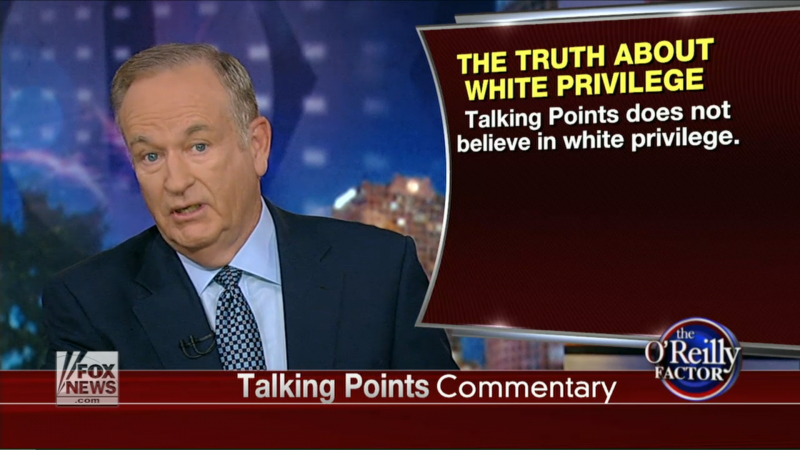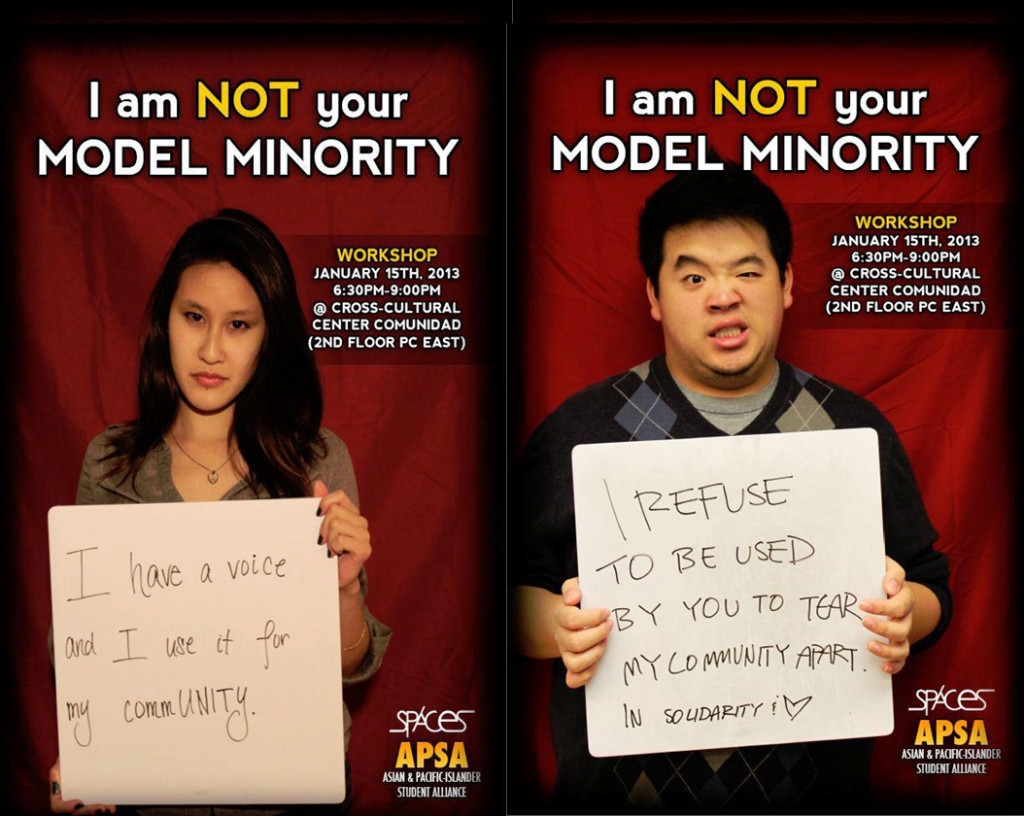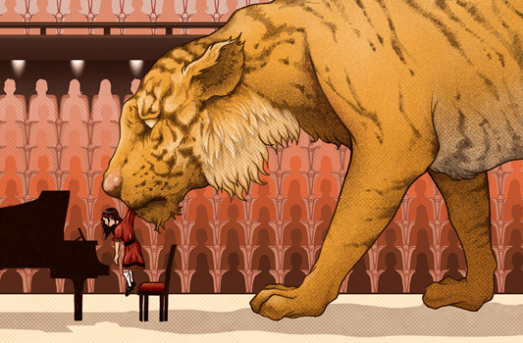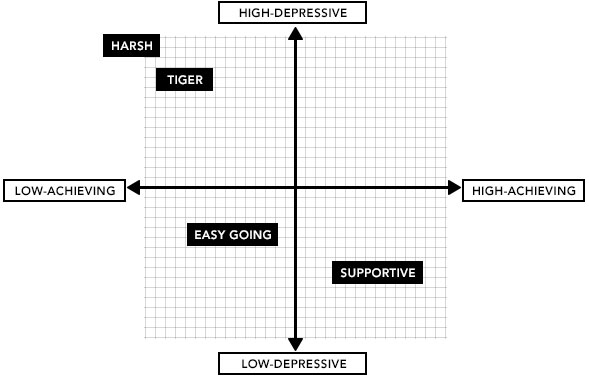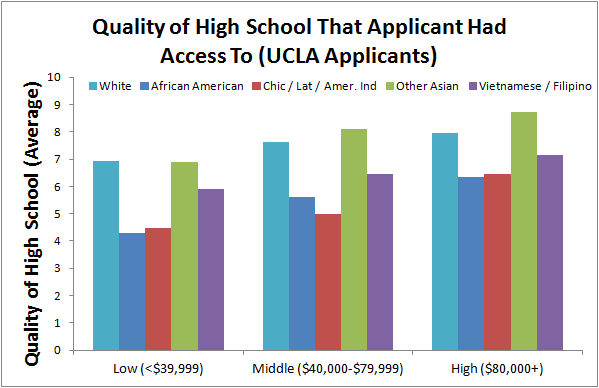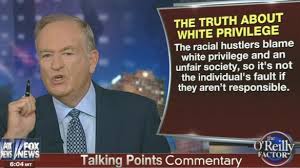This past week, Bill O’Reilly was his usual raging asshole self when he set out on his Fox News show “The O’Reilly Factor” to debunk the notion of White privilege. The essence of his argument? Asian Americans are doing great socioeconomically even though we are not White. Therefore, racism must not really exist, and the root of the problem for African Americans must be a cultural pathology.
To bolster his argument, O’Reilly pointed to racial disparities between Blacks, Whites and Asians in graduation rates, unemployment rates and median family income to conclude that African Americans have essentially invented a mythological White privilege as an attempt to avoid taking “personal responsibility”. O’Reilly argued:
Just 13 percent of Asian children live in single parent homes compared to a whopping 55 percent for blacks and 21 percent for whites. So, there you go. That is why Asian Americans, who often have to overcome a language barrier, are succeeding far more than African-Americans and even more than white Americans. Their families are intact and education is paramount.
In essence, Papa Bear provides a textbook example of Asian Americans used as the wedge minority by the White mainstream to berate African Americans (and implicitly other academically disenfranchised minority groups) for not bootstrapping their way to socioeconomic success. It can’t be racism; it must be some deficiency in Black culture to blame, right? After all, the Asians can do it, why can’t the Blacks?
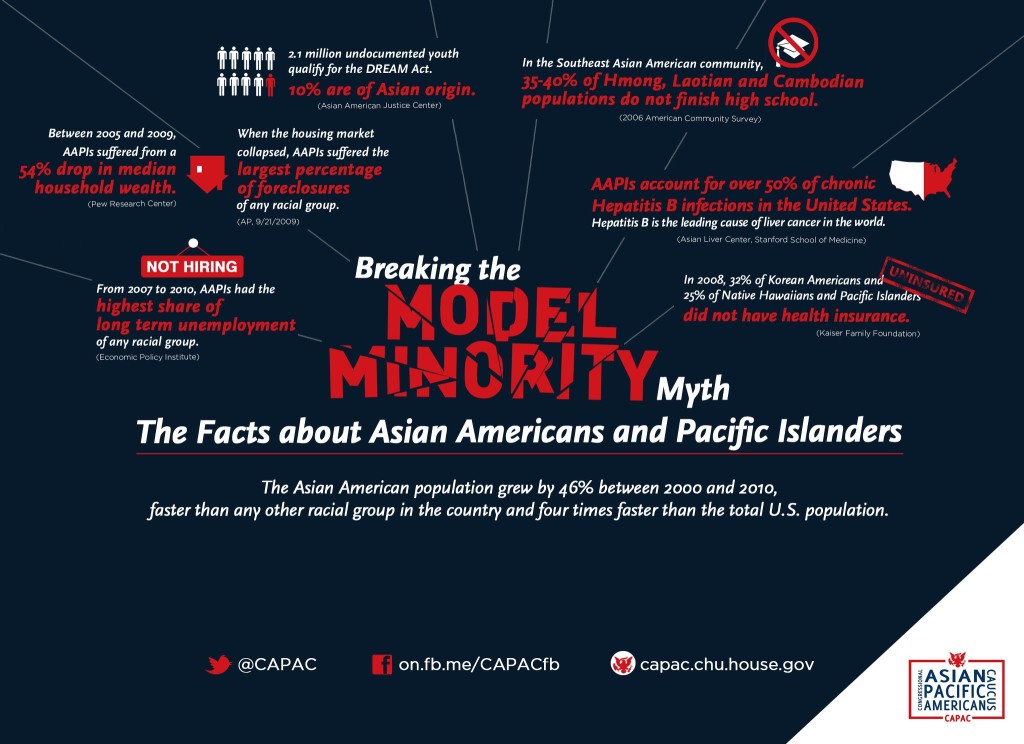
That a (White) conservative pundit would use the Model Minority Myth to insinuate a Black cultural pathology is nothing new. The Model Minority Myth — which, let us remember, is a myth — was invented for this explicit purpose: its first appearance in the American political zeitgeist was in a 1960’s New York Times Magazine article (“Success story: Japanese American style”) as a reference to Japanese American immigrants who overcame discrimination through alleged “perseverance”, in stated contrast to African Americans who were focused on overcoming discrimination through political action (i.e. the Civil Rights Movement). In other words, the Model Minority Myth has always been a fiction invented by Whiteness and has always been used as a cudgel to denigrate, belittle, or dismiss African American efforts to agitate for political equality, while simultaneously appropriating and limiting the roles that Asian Americans can politically inhabit.
The Model Minority Myth is an overt and potent tool of white supremacy used to justify structural racism against virtually all communities of colour (including Asian Americans). For many of us who identify as descendants of the politicized Asian American Movement, dismantling the Model Minority Myth has been of tantamount importance.
Thus, it comes as a surprise when I come across Asian Americans who would not only internalize the myth of the Asian American model minority as articulated by the likes of Bill O’Reilly, but who actually vocally take up its anti-Black logic as their standard. Earlier this month, I invited blogger Byron Wong (BigWOWO.com) onto the Reappropriate podcast to discuss affirmative action; over the course of that conversation and through later comments, Byron blamed cultural differences between Black and Asian communities for observed racial disparities on commonly used tests for college aptitude like the SATs. That perspective has been taken up on his site by both Byron and several of his regular (self-identified Asian American) readers: in a lengthy post and subsequent comment thread, Byron argues that Asians are culturally predisposed to academic pursuits (Blacks, he argues, are culturally predisposed to athletic achievement) and that African Americans should learn how to Tiger parent from Asians to correct the racial disparities in academics.
Another who identifies as Chinesemom puts it more bluntly when she writes:
I don’t think money can do much for African Americans. It is quite clear to me that their problem is the culture. If their culture doesn’t change, they will be stuck here forever.
No Chinese parents would claim their son a “good boy” if the kid were like Michael Brown or Trayvon Martin, we would be ashamed of raising that kind of thugs, even the killing of them may not be justified.
Both Bill O’Reilly and — disappointingly — several BigWOWO readers have bought into the Model Minority Myth hook-line-and-sinker. They espouse the tired canard of Asian American cultural exceptionalism, and in so doing join arms with Bill O’Reilly to reinforce the damaging effects of the Model Minority Myth in perpetuating anti-Black and anti-Asian racism in today’s America.
Don’t get me wrong: I understand that the Model Minority Myth is deeply flattering, which forms the basis for its appeal for some Asian Americans. People love to buy into a good story about their own racial or cultural superiority, as has been aptly and repeatedly demonstrated throughout human history. The problem, of course, is that the Model Minority Myth is also almost entirely fiction (a fact that is unlikely to sway partisan defenders of the Myth, who aren’t particularly interested in facts to begin with). The facts reveal that Asian Americans and Pacific Islanders aren’t better (or worse) than anyone else; like any community made up of different kinds of people, we are simply people.
First, the Model Minority Myth focuses on our success stories while it simply ignores data showing where Asian Americans are struggling, even in the aggregate. Bill O’Reilly cites Labour Department statistics showing low unemployment rates in the Asian American community; he fails to note that while our short-term unemployment rates are low, the same data show that chronic unemployment rates for Asian Americans are highest of all racial groups — and similar to that of Black American jobseekers. O’Reilly is unaware, it seems, of obstacles barring Asian Americans from advancing within their chosen careers — an effect known as the “bamboo ceiling” — which made headlines this week with the revelation that Asian Americans are being excluded from the top positions even in Silicon Valley tech companies where we are otherwise well-represented. And while O’Reilly shows the high median family income of Asian Americans in the aggregate, Papa Bear doesn’t bother to inform his viewer that our wealth gap is also the largest for any racial or ethnic group: some ethnicities have extremely high median family incomes, while others fall far short of the national average. Regionally, Asian American poverty is extremely high, as in San Francisco’s Chinatown area, where Chinese American residents are forced to pack entire families into single-resident dwellings, and limited healthcare access have resulted in rampant chronic disease.
In assuming a common and exceptional Asian culture of bootstrapped success, the Model Minority Myth simply fails to take into account the pan-ethnic (and indeed pan-racial) nature of the Asian American & Pacific Islander identity, which includes multiple subgroups who appear indistinguishable with regard to some socioeconomic metrics from Black, Latino and Native groups. For some Southeast Asian American or Pacific Islander groups, college acceptance and matriculation rates are markedly lower, while unemployment, poverty, and incarceration rates are distressingly high. For example, while as many as 70% of South Asian Americans hold a bachelor’s degree, that rate is a mere 26% for Vietnamese Americans and less than 15% for Laotian, Cambodian and Hmong Americans. The Model Minority Myth simply papers over these ethnic differences in achievement in its assertion of a universal Asian American culture predisposed to better book-learning.
The issues are, as New York Times columnist Charles Blow points out, simply more complicated than the oversimplified Culture Canard would assert. The Culture Canard — which boils all success and failure down to cultural facets — ignores far too many of the mitigating socioeconomic factors that mountains of scientific evidence demonstrate as also significant in determining student success. Charles Blow writes, for example, about the potency of America’s immigration system in filtering America’s Asian immigrants. Blow cites both Pew and Colorlines in writing:
A 2012 Pew Research report entitled “The Rise of Asian Americans” found:
“Large-scale immigration from Asia did not take off until the passage of the landmark Immigration and Nationality Act of 1965. Over the decades, this modern wave of immigrants from Asia has increasingly become more skilled and educated. Today, recent arrivals from Asia are nearly twice as likely as those who came three decades ago to have a college degree, and many go into high-paying fields such as science, engineering, medicine and finance. This evolution has been spurred by changes in U.S. immigration policies and labor markets; by political liberalization and economic growth in the sending countries; and by the forces of globalization in an ever-more digitally interconnected world.”
Following the publication of the Pew report, the news site Colorlines spoke with Dan Ichinose, director of the Asian Pacific American Legal Center’s Demographic Research Project, who was critical of some parts of the Pew report, but seemed to echo the role immigration had played. Colorlines put his response this way:
“The more complex and far less exciting explanation for Asian Americans’ relatively high rates of education has more to do with immigration policy, which has driven selectivity about who gets to come to the U.S. and who doesn’t, said Ichinose.”
Because US immigration policy only permits permanent entry through specific visa classes, most Asian Americans are (by definition) selected through this process. Nearly one quarter of Asian immigrants enter as highly-skilled or highly-educated job recruits, an additional one quarter are entering as the immediate family of these recruits. That means by virtue of the effect of US immigration policy on our community alone, nearly half of all new Asian Americans have been selected because they have at least one highly-educated family member and are part of an intact family unit. Meanwhile, immigration is itself an expensive prospect: between the cost of travel and moving, even the most impoverished migrant family must have invested between hundreds and thousands of dollars in their arrival, which results in the selction of families of a certain base earning potential. That means that when amateur sociologists like Bill O’Reilly try to make conclusions about the cultural intelligence of Asians versus Blacks, he is doing so while comparing the general African American population against the achievements of a select group of (economically and educationally) privileged Asian Americans.
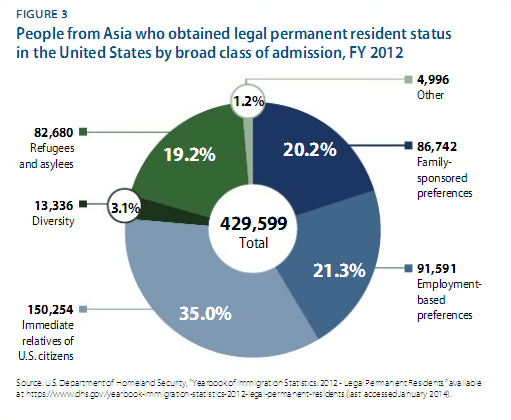
The power of the US immigration system in selecting the Asian American community is no better demonstrated than in Minnesota. This week, the state’s public school educators are holding an emergency meeting to address the summarized findings of the state’s reading, math and science proficiency tests which are administered to grades 3 through 8. As in previous years, the state’s White students boast a proficiency rate two to three times higher than Black, Hispanic or — importantly — its Asian American students. Only 29% of Asian American students are proficient in reading, only 19% are proficient in science, and only 41% (and only 30% of South Asian Americans) are proficient in math; all numbers comparable to Black and Hispanic classmates, and far shorter than the achievement of White students. Aside from the obvious overall problems with any public school system that is so patently failing its students of colour, these data are also illuminating in regards to today’s post topic: they run at direct odds with the Model Minority Myth.
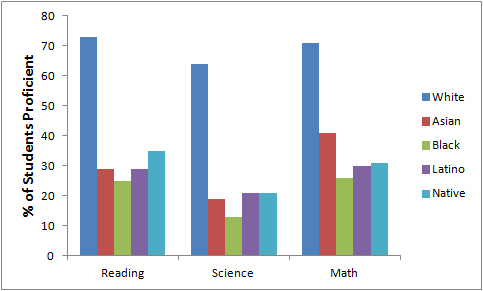
The Model Minority Myth of Bill O’Reilly’s articulation would assert that Minnesota’s Asian Americans should, even immersed in a failing school system, be able to leverage our two-parent homes and our Asian cultural predispositions for academia to bootstrap our way at least past the Black and Latino students that Chinesemom would characterize as culturally stagnated. If we are so academically focused in the home, shouldn’t Asian American students demonstrate better proficiency than Black or Latino classmates even when Minnesota public schools are languishing? Yet, this is simply not so. In Minnesota, we’re not Tiger Parenting our way to success.
The reason for this has nothing to do with culture and everything to do with immigration policy. In Minnesota, the Asian American community is about equally distributed between South Asian, Chinese, Hmong, Laotian, Vietnamese and Thai communities; the latter groups include a higher number of immigrants entering the country as political refugees, meaning that they have not been selected through immigration for economic and educational privilege. And, it is the absence of the effects of that filtering that explains the results: Asian American students are not innately or culturally superior at academic pursuits than their non-White peers, they only appear to be when one fails to recognize how some Asian Americans who have been selected for their privilege are able to fall back on that privilege to buoy their educational outcomes. In Minnesota, absence of economic privilege along with the absence of a supportive public school system combine to reveal that Asian Americans of all ethnicities — like all students of colour — can be vulnerable to academic underachievement when the system fails them. No amount of Tiger parenting will help.
Indeed, the very concept of Tiger Parenting is a contentious one among scholars of this field. Proponents of Asian American cultural supremacy argue that Asian American parents have, in essence, cracked the secret of scholastic success, citing the parenting style codified by Amy Chua’s infamous book. This form of strict parenting is, argues Byron Wong, a distinctly common Asian one; it is a style he also asserts is directly responsible for Asian American high achievement on tests like the SATs, and a style that he further asserts is lacking among African American communities. Yet, in a special issue of the American Psychological Association’s Asian American Journal on Psychology which was devoted to the Tiger Parenting phenomenon, researcher Su Yeong Kim reported that a minority of Asian American parents (28%) are Tiger parents; most Asian Americans (45%) parent in a more supportive style that eschews the negative reinforcement and high expectations characteristic of the Tiger mother.
Researchers Min Zhou and Jennifer Lee explore how it is a larger “success frame”, not the Tiger parents, that sets the expectations of Asian American students in a manner that compels academic pursuits but with significant drawbacks for self-esteem and identity: those Asian American youths who succeed in the classroom are strongly motivated by the feeling of being “more Asian” when they succeed, but those who come up short suffer racial and cultural distance and alienation.
Meanwhile, there is little evidence to support the other side of the argument when it comes to the Culture Canard: that African American families are uninvested in academic pursuits, and that Black youth are more interested in basketball or music than students of other races. Anyone who has spent any time in the Black community knows the emphasis placed by Black parents, Black peers, and even the Black church on higher education for the community’s sons and daughters. Since the times of chattel slavery, intellect was not only prioritized, it was a form of abolitionist revolt: slaves secretly taught themselves to read while hiding that skill from their masters. One of the major priorities of Reconstruction was the creation of schools for the education of Black children. Black students go out for the debate championship and enroll in AP classes as readily as do students of other races. The African American community founded HBCU’s as a direct response to segregation. Black thinkers are responsible for the traffic light, the cotton gin, and the first open-heart surgery. Black intellectuals — Neil deGrasse Tyson, Condoleeza Rice, Colin Powell and more (not to mention the president and his equally as accomplished wife) — can be found throughout American life. One study by Charles et al (2007) reveals that upon controlling for income and schooling, Black parents are no less invested in the parenting or education of their children than are parents of other races. Another study showed that Black students are equally if not more intellectually curious than their non-Black peers. The stereotype of the unconcerned Black parent is a (racially charged) re-imagining of the Reagonomics “welfare queen”, but bears little resemblance to the realities of contemporary Blackness; anyone who advances this stereotype has spent no time in, and actually engaging with, the Black community.
There is no doubt that a racial disparity exists in quantifiable scores used (often overly broadly) to measure student aptitude. In the aggregate, White and Asian American students earn higher GPAs and outperform on the SATs compared to Black and Latino students; this disparity has been misused by Bill O’Reilly and others to bolster claims of Asian American cultural superiority in the context of the myth of Black cultural pathology. But, as Lee and Zhou point out, many Asian American students cited in such studies are starting from a position of greater privilege and opportunity (while those Asian American students lacking those privileges are lost in the statistical shuffle). Lee writes in an editorial:
Like Chua and Rubenfeld, we found that the children of Chinese immigrants exhibit exceptional educational outcomes that exceed those of other groups, including native-born Anglos. In Los Angeles, 64 percent of Chinese immigrants’ children graduated from college, and of this group 22 percent also attained a graduate degree. By contrast, 46 percent of native-born Anglos in L.A. graduated from college, and of this group, just 14 percent attained graduate degrees. Moreover, none of the Chinese Americans in the study dropped out of high school. These figures are impressive but not surprising.
Chinese immigrant parents are the most highly educated in our study. In Los Angeles, more than 60 percent of Chinese immigrant fathers and more than 40 percent of Chinese immigrant mothers have a bachelor’s degree or higher. In turn, their children benefit from their parents’ human and financial capital, giving them a boost in their quest to get ahead.
This boost – which includes resources such as after-school programs, SAT prep courses and tutoring – isn’t limited to the middle class. The children of working-class Chinese parents employed in restaurants and factories benefit from capital and resources that are made widely available to other Chinese Americans.
Lee alludes to, in part, how local communities are still geographically segregated and stratified by race, not class, meaning that working-class Asian Americans may also benefit by living in or near a wealthier predominantly Asian American ethnic enclave and benefit ting from the improved public school quality therein; whereas middle-class Black Americans may still live in poor predominantly Black neighbourhoods, where public schools may lack the taxpayer funds to provide adequate resources for students. Indeed, in a recent data crunch of admissions information from UCLA, I found that lower-income White and Asian American students still had access to better quality high schools than wealthy Black students.
In short, it would be fallacious to ascribe the high educational outcomes of Asian Americans to sheer bootstrapping, as Bill O’Reilly and BigWOWO readers would do; “high-achieving” Asian Americans perform well at least in part due to the specific economic privileges that come with membership in some Asian American ethnic communities, where extra resources are widely available, and even indirectly shared between wealthy and working-class families.
Yet, in his recent post, Byron Wong ignores these mitigating factors and suggests (along with many of his readers) that Asian Americans are scoring up to 400 points higher on average on the SATs than Black students (a number misapplied from the work of Thomas Espenshade), which he uses to assert the intellectual academic superiority of the Asian American student, and Black cultural and parental pathology. The SATs are a poor measure of student aptitude, and are not designed to measure student merit in the first place. While the SATs are very weak predictors of first-year college performance within the range that they are typically considered by college admissions officers, they are very strong at predicting one thing: the family income of the test-taker. Those who point to racial gaps in the SATs as evidence of Asian American cultural exceptionalism and Black cultural pathology fail to consider some things we already know: 1) that median family income differs across the races, and 2) income seems to matter quite a bit on SAT outcome.
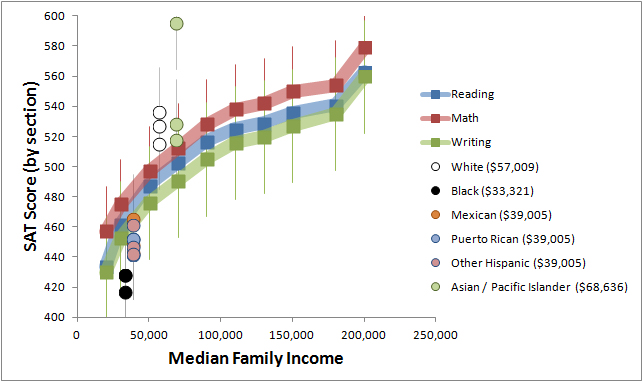
In fact, when one considers the differences in median family income between Asian and Black students, one finds that the racial disparity in average SAT score is for the most part exactly what one would expect if assessing any two students coming from different backgrounds in family income. Given their median income, African American students are not, in fact, underperforming on the SATs at all (which does not mitigate all of the other problems with this exam, but I digress); and they are certainly not underperforming for vaguely defined if wholly racist explanations related to stagnated culture. This is not a culture thing, this is an economics thing.
As for Asian Americans, the only significant deviation in how Asian American students perform in the aggregate on the SATs is their high mean score on the math portion: in the aggregate, Asian Americans score about 75 points higher than one might expect for their income level on the math section alone. This is no small feat to be sure, but the reasons for this very specific high achievement are not clear. Further, it’s hard to hang the entire hat of Asian American cultural superiority on a 75 point boost in one section of a three-part SAT exam; and Asian Americans are performing exactly as would be expected based on their median income level on the other two sections.
It is in consideration of minority student performance not just in the absolutes, but in relation to the context of opportunities afforded to them, that lead Lee and Zhou to the perhaps surprising conclusion that it is (in Los Angeles at least) Mexican American youth who are the most successful of all students, not Asian Americans.
At what seems to be the other end of the spectrum, the children of Mexican immigrants had the lowest levels of educational attainment of any of the groups in our study. Only 86 percent graduated from high school – compared with 100 percent of Chinese Americans and 96 percent of native-born Anglos – and only 17 percent graduated from college. But their high school graduation rate was more than double that of their parents, only 40 percent of whom earned diplomas. And, the college graduation rate of Mexican immigrants’ children more than doubles that of their fathers (7 percent) and triples that of their mothers (5 percent).
…[T]here is no question that, when we measure success as progress from generation to generation, Mexican Americans come out ahead.
In the end, this isn’t really about figuring out which culture is superior to another (hint: none); it’s about pulling the focus away from the fiction of the Culture Canard in the first place by debunking the myth that Asians are culturally exceptional and should provide the roadmap for “low-achieving” minorities.
A nearly 4000 word essay on Bill O’Reilly and his Asian American supporters regarding the Culture Canard might seem like much ado about nothing, but this pernicious myth demands analysis, if for no other reason than to point out how unfounded the Model Minority Myth is. But more tangibly, these words do not exist in a vacuum. They are only the latest salvo in America’s larger ongoing siege on Blackness — one that has real-world impact in the form of denying political investment in social services’ programs that would promote American class mobility, education, and uplift. When Bill O’Reilly demands “personal responsibility”, his goal is actually to absolve society of the responsibility of acknowleding our foundation in institutional racism. When Bill O’Reilly blames the racial hustlers, he shifts attention away from the mass incarceration state, educational segregation, economic violence, voter disenfranchisement, and the perpetual maintenance of Black America as a permanent social underclass.
And that’s not even getting into the damning effect of the Model Minority Myth on Asian American politics.
As Asian Americans, I believe we have a personal responsibility to not only refuse to support The Model Minority Myth, but to actively dismantle it at all costs. Sure, it might seem fun to have one’s culture praised by an “Important White Man” like Bill O’Reilly — is this newfound White acceptance a sign that we’ve made it?!? — but we must remember: this is nothing more than repackaged insidious anti-Asian and anti-Black racism for a new millennium. Asian Americans are no more culturally superior — or inferior — than any other group of people. We haven’t cracked the mystical, magical, Tiger mom secret to getting into Harvard. We are just people — some of us very privileged, others of us less so — who succeed and fail at life just like any other; racial parity is an America that recognizes, not flattens, those imperfections.
As an Asian American, I believe in the solidarity project. I prioritize the uplift of all people of colour, not just other Asian Americans. I have no desire to be embraced by the likes of Bill O’Reilly and used as a weaponized identity against my fellow man. To that end, I want no complicity in the Culture Canard; and, neither should you.
Read More:
- Scot Nakagawa for Racefiles: The Manipulation Factor: An Asian American Take on O’Reilly, Race and Asian Americans
- Marie Myung-Ok Lee for Salon: Bill O’Reilly’s ‘Asian Privilege’ Disgrace: The Fox News Host Needs Some Basic History Lessons
- Kevin Wong for Salon: What Bill O’Reilly Gets Wrong About Asian Americans
